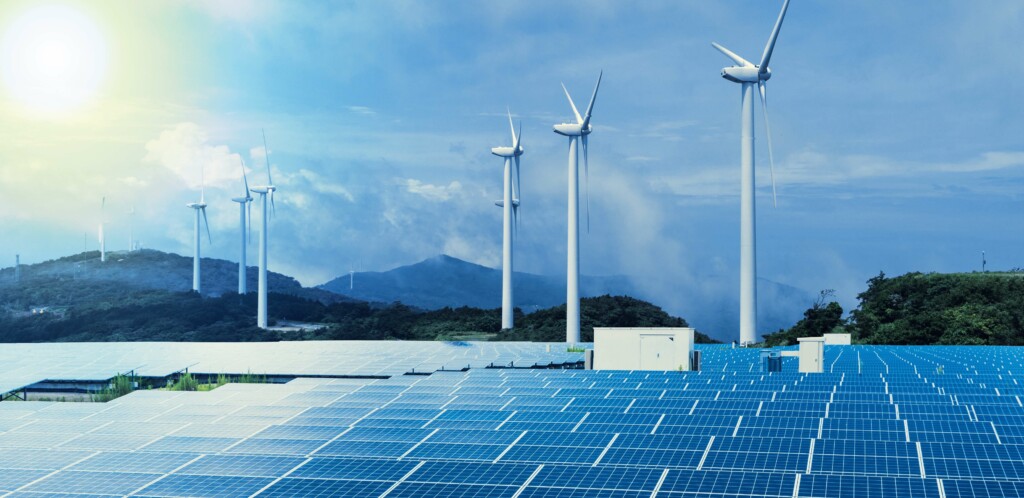Trend report: The future of hybrid solutions
09/09/2020
 In just 20 years, renewable energy sources have grown rapidly in popularity. Wind energy, for example, has risen from being a niche energy source in some regions, to a popular source of cost-competitive energy in many parts of the world. However, human power consumption is increasing and the demand for further power generation is inevitable. Hybrid power plants, combining wind turbine technology and solar photovoltaic, could help decarbonizing the world’s power system and meet the growing demand for energy.
In just 20 years, renewable energy sources have grown rapidly in popularity. Wind energy, for example, has risen from being a niche energy source in some regions, to a popular source of cost-competitive energy in many parts of the world. However, human power consumption is increasing and the demand for further power generation is inevitable. Hybrid power plants, combining wind turbine technology and solar photovoltaic, could help decarbonizing the world’s power system and meet the growing demand for energy.
As a result of vast falls in technology cost and supportive policies, wind and solar power are today strong competitors to fossil energy sources. Last year, nearly three-quarters of new electricity generation capacity built used renewable energy, demonstrating an all-time record[1].
Also, 2019 was the second largest year for the wind industry with installations of 60.4 GW globally[2]. In the United States alone, solar accounted for 40% of all new electric generating capacity[3].
A new approach
At the same time as wind and solar power capacity has cultivated, there is a need to look beyond individual renewable energy solutions. Global Wind Energy Council claim that different sectors and countries must look into how to promote technologies that increase system value.
International Energy Agency similar argues that it is vital to integrate greater shares of variable renewable energy (VRE) technologies in power systems in order to decarbonizing the world’s power sector, as well as meeting the growing demand for energy.
In an analysis, they state: Power systems around the world are undergoing significant change, driven particularly by the increasing availability of low-cost variable renewable energy (VRE), the deployment of distributed energy resources, advances in digitalisation and growing opportunities for electrification. These changes require a profound power system transformation[4].
Hybrid solutions – enabling flexibility
One of the main areas discussed in the renewables industries is hybridisation; merging wind energy with additional energy source and/or storage solution. Hybrid installations generate electricity from two or more sources, usually renewable energies such as wind, photovoltaic and hydro energy. When it comes to extracting renewable energy, Nexam Chemical offers, among other things, technology for manufacturing PET foam for wind power blades, as well as chain extenders and stabilization of polyester for film that can be used in solar cells.
There are two ways to create this type of hybrid plant; either from scratch or using an existing plant. The latter is most common and works in the way that a new module is added from another source. The existing generation technology that is already used is thus combined with the renewable energy.
Hybridisation comes with several benefits, such as increasing the number of renewables in the grid. In a hybrid generation plant, photovoltaic energy can be used when its sunny and a different source, such as wind, when its cloudy. This make the system reliable and resourceful.
The technology can be especially benefit emerging markets, such as remote areas and continents where it provides a stable supply. The plants also provide off-grid solutions and for smaller grids. For advanced markets such as Europe, United States, Australia and Southeast Asia, it can be an enabler when it comes to replacing fossil fuels.
According to Global Wind Energy Council, hybridisation is currently entering several markets as the technology solve one of the main challenges connected with renewable energy; flexibility. When additional renewables are integrated into the grid, the amount of efficient electricity increases. Today, projects with hybrid plants are running all around the world. Both companies and investors are curious to find out what opportunities and revenues the technology can provide.
Finally, to utilize its full market and development potential, technical enablers are required. For example, solutions are needed to reduce the cost of storage and systems to handle production and dispatching. With these enablers, hybrid solutions will grow in a quick pace, not at least in emerging markets.
[1]https://www.irena.org/publications/2020/Mar/Renewable-Capacity-Statistics-2020
[2]https://gwec.net/global-wind-report-2019/
[3] https://www.seia.org/news/solar-accounts-40-us-electric-generating-capacity-additions-2019-adds-133-gw
[4]https://www.iea.org/topics/system-integration-of-renewables